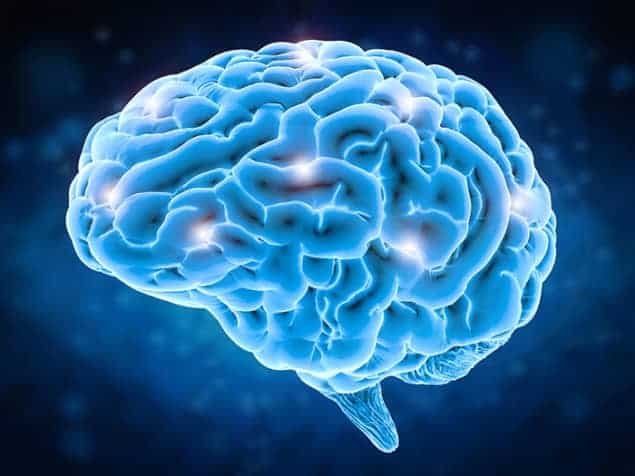
Spin-glass-like states that occur in models of neural networks can provide important insights into states of low and high brain activity that have been observed in mammals. That is the claim of a team of theoretical biophysicists in Spain who are the first to show that these disordered states in neurological networks could have a functional role in living brains.
In familiar magnetic materials such as ferromagnets, the interaction between individual spin magnetic moments causes all of the spins to point in the same direction of magnetization. In spin-glass states, the interaction between spins does not allow individual spins to point in the same direction as their neighbours. This leads to “frustration”, whereby no direction of magnetization exists and the spins point in random directions.
Brains are not magnetic systems and their working cells – neurons – do not resemble magnetic moments, but mathematically they behave in a similar manner. This is because neurons also have a binary variable – firing or not firing – which is similar to the up or down quantum states of spin. Neurons are also linked by synapses in a way that is similar to how magnetic spins interact with each other. As a result, a neural network in which all of the neurons are firing (or not firing) is similar to a magnetic material in which all of the spins are all pointing up (or down).
Synapse strength
When we create a memory, it is stored in our brain as a pattern of neural activity encoded by the strength of the synapses. These synapses can be either excitatory – they favour the transmission of information – or inhibitory – they inhibit transmission – and vary in connection strength. When the memory is triggered, the neurons fire or stay silent in a pattern configured by these synaptic connections.
Mathematical models of the recall of learned memories are based around simulations of binary neurons linked by connections of varying strengths. In such neurological models, memories are introduced in the same way as in real brains – as a pattern of binary activity encoded by connections and inhibitions of varying strengths. In these models, disordered states that resemble spin glasses emerge when the number of stored patterns and the network size (the number of stored memories) approaches infinity. They are essentially a frustrated state of frozen neural activity.
Previous models, however, do not accurately represent the balance of synapse configurations that have been found in brains. Instead the models had generally assumed an equal balance of excitatory and inhibitory synapses with similar strengths.
Balanced brains
“In the brain you have heterogeneity, but you have a balance,” explains Joaquín Torres at the University of Granada. “80% of the synapses are excitatory and 20% are inhibitory, but inhibitory synapses are stronger than excitatory synapses. So you have a kind of balance that retains the heterogeneity in the brain within an optimal range.”
“We also introduce this into our model”, adds Torres. Using this more realistic balance of excitatory and inhibitory synapses and synaptic strengths, the researchers found that at low “temperatures”, disordered states with spin-glass behaviours appeared naturally even when only a few memories had been introduced – it was no longer necessary for the network size to approach infinity. They also demonstrated mathematically that these states are not linked to memory retrieval.
“We can measure how far we are from a memory,” explains Torres. “If you reach a memory you will have a value of nearly one, meaning that you recover the memory. If you compute the same measure for a spin glass you will have zero.”
Frustrated states
They also found that these frustrated states are associated with relatively high or low brain activity – unlike memory recall – that correlate with well-known “up” and “down” states that have been described in neural models and observed in the brain activity of mammals.
“We have proven both theoretically and through simulation that the up and down states observed in the activity of mammal brains would be but a mere manifestation of these spin-glass states,” says Torres. “This spin-glass state is due to the heterogeneity that is observed in the synaptic strength in the brain – this balance between excitation and inhibition.” The research is described in Neural Networks.



